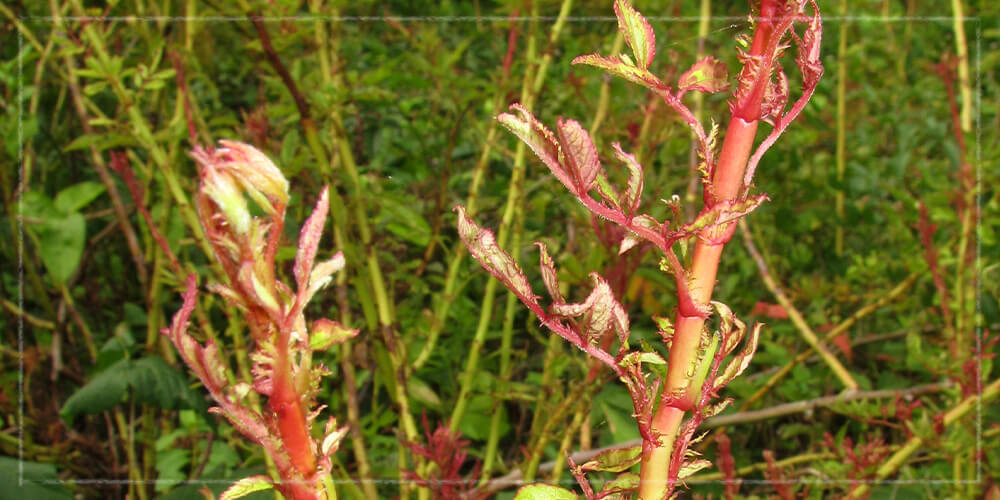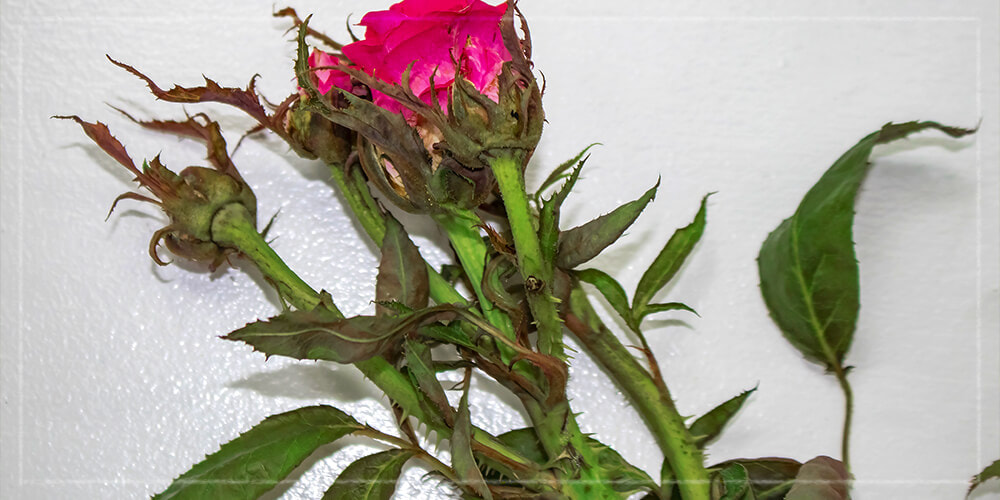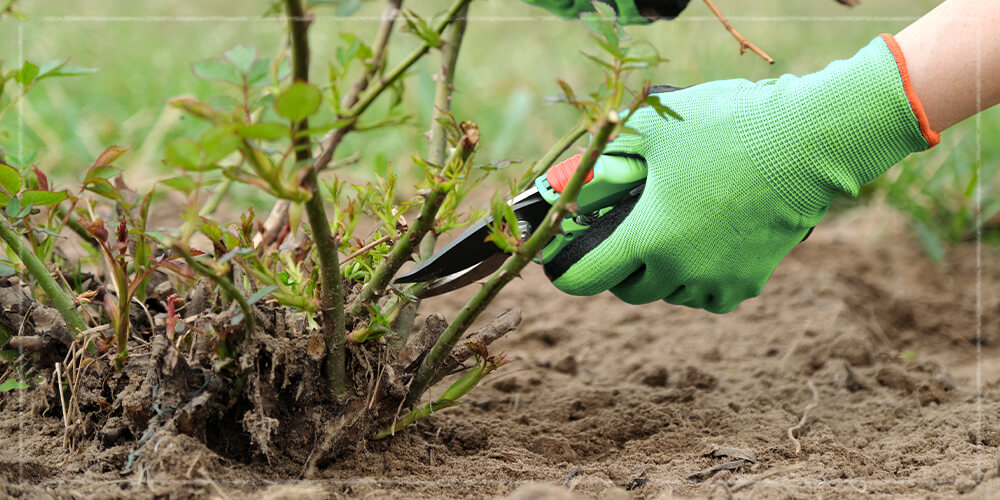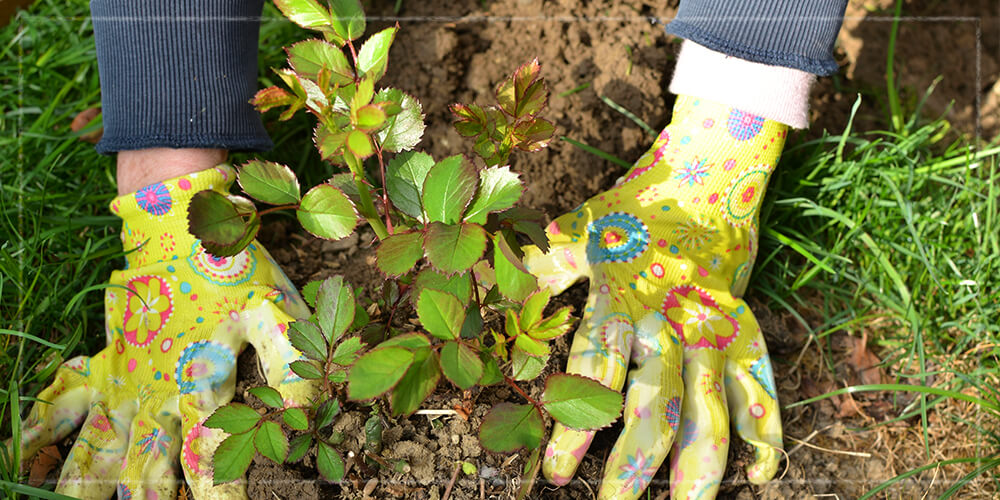No one likes when their precious plant babies get sick, and some diseases are more manageable than others. We hate to be the bearer of bad news—but rose rosette disease is one you definitely want to take seriously. If you are passionate about growing roses, this disease can be pretty devastating. The best option is simply to destroy the affected rose plant to prevent it from spreading. But, before we go full doom and gloom on ya, let’s learn a little bit about how to identify it, prevent it, and some management tactics you can take to keep it from getting out of control.

What is Rose Rosette Disease?
Otherwise known as witches-broom, rose rosette disease is actually caused by a virus spread by a teeny, tiny little ‘eriophyid’ mite (more simply, a plant parasite). It causes roses to develop oddly deformed flowers, leaves, and stems. The mites that spread it are not visible to the naked eye, and the disease, once it takes hold, can be fatal within two to three years. It is specific to roses, and its primary host is believed to be Rosa multiflora, but pretty much all hybrid roses are susceptible to it.
How is Rose Rosette Spread?
Typically, rose rosette disease is transmitted in one of two ways: eriophyid mites or through grafting. After feeding on an infected plant, these microscopic mites can crawl short distances on your rose plant to infect other areas. They can also be carried much further on wind currents, though, which is how they can infect new roses.
While you cannot transfer the virus itself from one plant to another on tools (say, a pair of shears), it is possible to carry the mites themselves on gloves, clothing, or tools. The cold doesn’t kill these little buggers either; they can hide out in buds, spent flowers, leaf axils, or leaf scars and survive until another season. The virus will likely remain inactive in the winter, but symptoms can show up on new growth the following spring.
Multiflora rose, which is considered an invasive species in the United States, is often a carrier of the disease. It is said that all but nine states in the country have reported infestations, so it is, unfortunately, a pretty widespread problem.

“Rose Rosette Disease” flickr photo by Kerry Wixted, https://flic.kr/p/8wkfCM, shared under a Creative Commons license.
“It can take anywhere from two to five years for rose rosette to completely take out a rose bush, so in the early stage, symptoms may only appear on a couple of shoots or a small part of the plant.”
How to Tell if Your Roses Are Affected by Rose Rosette Disease
There are some pretty distinct symptoms and signs of rose rosette to keep an eye out for. These include, but are not limited to:
– Excessive thorns
– Flower buds that emerge in tight little clusters (the ‘rosettes’ that give the disease its name)
– Deformed flowers that appear stunted in growth
– Deformed or contorted foliage
– Very bright red new growth that never turns green
– Really thick stems
– Discoloration in general (i.e., yellow foliage)
– Reduced winter hardiness

A rose that is infected with rose rosette disease could have all or just one of these symptoms. It can take anywhere from two to five years for rose rosette to completely take out a rose bush, so in the early stages, symptoms may only appear on a couple of shoots or a small part of the plant. It is also worth noting that some of these symptoms are similar to what you would see if your roses were subject to herbicide damage. It’s easy to confuse them, but generally, the sprayed foliage will not grow as vigorously as the infected bush. If you’re not sure, though, feel free to pop by the garden center to talk to one of our experts!

Managing Rose Rosette Disease
Virus transmission occurs the most when plants are in an active growth stage, so usually between May and mid-July, with symptoms usually also showing their ugly heads around July. Multiple generations of mites can occur each year right up until fall, when the females go looking for a warm place to sleep for the cooler months.
So, to control this disease, you have to be able to control the mite’s reproduction cycle and stop them from spreading. Regularly scouting for signs of rose rosette and being familiar with the symptoms is very important for management.
You can also use organic pesticides like horticultural oils or insecticidal soaps every week through June and July. When doing so, pay close attention to new growth where the mites are more likely to hang out. As we mentioned earlier, mites can travel with the wind, so it’s best to avoid using tools like leaf blowers around your roses.
If you do stumble upon an infected plant, though, it is best to remove it and the soil around it immediately and safely dispose of it in a garbage bag (not in your compost) to prevent the disease from spreading any further.

Prevention Methods
The best way to prevent rose rosette from taking over your garden is to buy disease-free, healthy roses from reliable places like Carolina Seasons. And, keep your roses in tip-top shape so they are better able to fight disease.
Plant your roses fairly far apart, so mites are not able to crawl from plant to plant, and follow a proper fertilization schedule to promote healthy growth. Pruning your roses in late winter and early spring may also stop mites from damaging your plant before they have a chance. Since they like to overwinter in flower buds and seed heads, pruning them and disposing of them in early spring can eliminate any mites that might have made a home in there.
Protecting your roses from winds in the area is another great prevention tactic. You can do so with walls or with other plants. Since the mites that spread the disease are easily blown by the wind, this will reduce the risk of them landing on your roses.
Plant disease can be devastating for gardeners. But, with the right knowledge, you can tackle problems like rose rosette with confidence. Or, if you need someone to bounce ideas off of, the team at Carolina Seasons has plenty of know-how we’d be happy to share.

